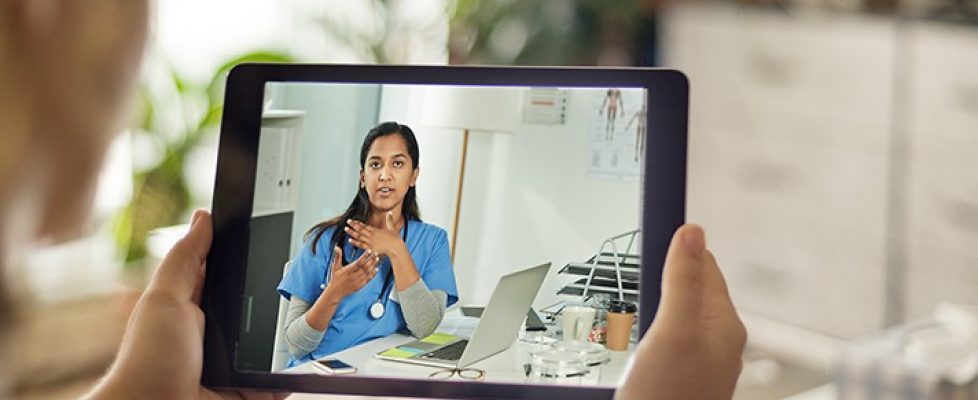How virtual care can be refined to reach those who need it most
Clinicians, vendors and telehealth advocates stress the importance of virtual services in expanding access to care – and noted the ways it still needs to improve.
There’s no doubt that telehealth has proven to be an integral tool to keeping healthcare accessible amid the COVID-19 pandemic.
“Telehealth has continued to grow and has continued to really set the pace” for digital innovation, said CHIME president and CEO Russ Branzell. Though the coronavirus crisis has certainly sped up that process, he said, the foundation for such growth has been laid overtime by digital health leaders.
But other experts who spoke at this week’s HLTH VRTL 2020 conference reminded attendees, clinicians and innovators must be willing to think outside the box to fulfill telehealth’s promise.
“The pandemic has driven innovation in the shape and design of the traditional healthcare visit. We must add structures that will achieve health equity,” said Dr. Megan Mahoney, clinical professor of medicine, primary care and population health at Stanford Health Care, in a statement provided to Healthcare IT News.
“When designing telehealth interventions, we must ask ourselves, ‘How can recent advances in health technology help achieve health equity in the populations we serve?'” Mahoney continued.
Mahoney noted, like other attendees, that COVID-19 has been an accelerator, both in terms of digital health innovation and exacerbating existing inequities in the healthcare system.
“We’ve seen first-hand the difference that direct-to-consumer telehealth can make to patient services,” said Dr. Krishna Upadhya, senior medical advisor at Planned Parenthood Federation of America.
“Planned Parenthood is committed to centering our patient population as we increase delivery of care through telehealth, by working to address barriers to use like broadband access, cultural competency among providers, language integration, and privacy,” she said in a quote provided to Healthcare IT News.
“It’s imperative that telehealth aid our efforts to expand access to both healthcare and information for communities who have historically lacked access – rather than mirror the inequities of the current healthcare system,” she continued.
Although “telehealth promotes real time-access to healthcare” in an unprecedented way, Mahoney said, it can also leave patients behind – particularly older adults, disabled people, those with limited English proficiency and others.
At Oak Street Health, a primary care system aimed at seniors who use Medicare, senior medical director Dr. Olaoluwa Fayanju said that clinicians had run into issues with device literacy among patients.
One way their system solved it, he said, was to purchase Internet-enabled tablets and physically bring them to patients at their homes – allowing clinicians to reach people without requiring them to physically come into a medical setting.
“I’m encouraged by devices and technology that make it easier to talk and connect with our patients,” said Fayanju.
Other panelists noted that there exist services that necessitate in-person care.
“There are a number of things we still have to address,” said Dr. Albert Chan, chief of digital patient experience at Sutter Health, “things like vaccinations and chronic disease management screenings, and other things we need to catch up on.”
Still, Chan continued, through virtual care, “We’re not just providing care in new ways; we’re hyper-personalizing medicine on behalf of our patients.”
Some of those gaps can also be solved with remote monitoring technology, such as pulse oximeters and at-home blood pressure monitors.
“We are witnessing an unprecedented convergence of many factors that are both stressing and creating opportunity for the healthcare delivery system and for population health,” said Anand K. Iyer, chief strategy officer at Welldoc, in a statement to Healthcare IT News.
“COVID-19 has underscored the need for and value of digital health solutions in effective remote patient care,” Iyer continued.
During his session on the relevance of telehealth, Iyer – who has Type 2 diabetes – pointed out the importance of remote monitoring that reports information rather than simply data.
“It isn’t sufficient to tell me I took 400 steps,” said Iyer. “I want to know: How is that activity correlating with, say, an overall improvement in my glucose management?”
“I don’t want to see the data, I want to see the information, which drives me to take bigger action,” Iyer continued. “I don’t want to be thinking about my diabetes all day, I want to be thinking about living.”
Iyer noted that virtual care is here to stay beyond the pandemic. He predicted: “If [care] doesn’t have a fundamental technology component, it’s not going to be relevant.”
“Telehealth should not be an exception,” said Angela Williams, president and CEO of Easterseals. “It should now become a norm, and a tool used by healthcare providers and other providers across the board.”

